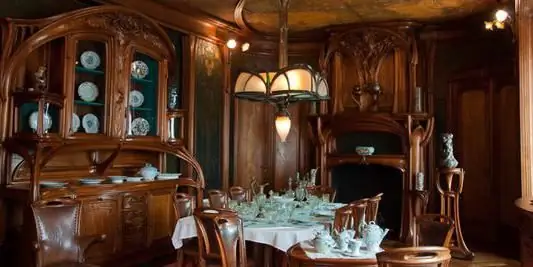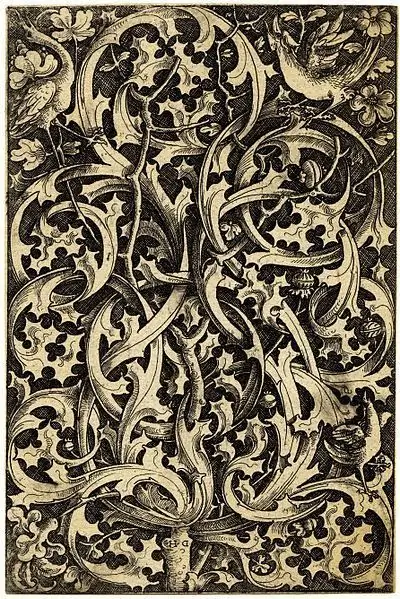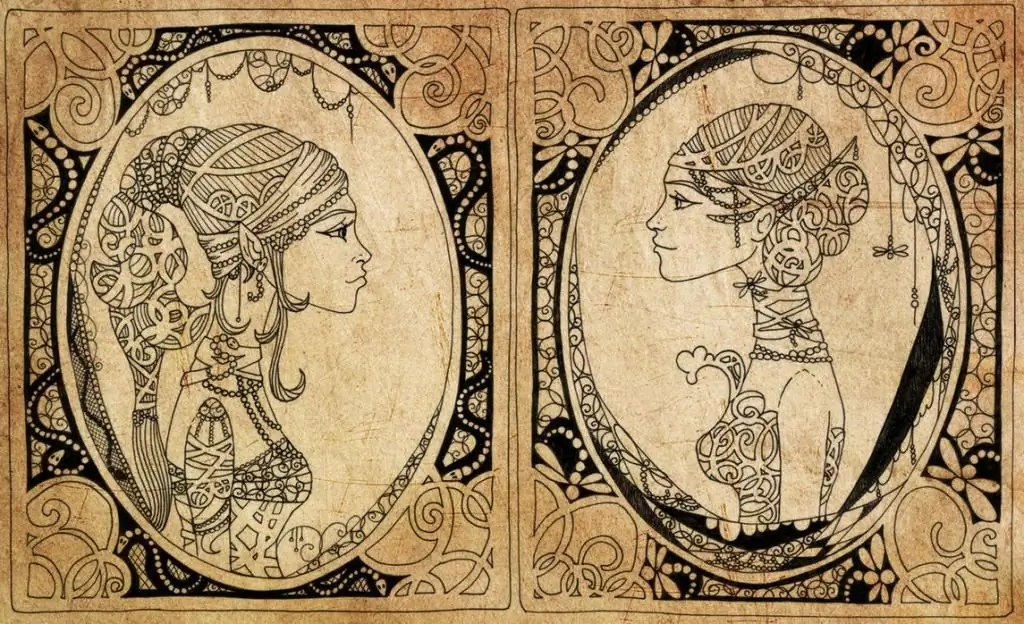2025 Author: Leah Sherlock | [email protected]. Last modified: 2025-01-24 17:46:24
In French - Art Nouveau, in German - Jugendstil, in Hungarian - Secession. All these are the names of the Art Nouveau style, which gained popularity at the beginning of the 20th century and still enjoys it.
Ideas from the East in modern style
Modern style borrows a lot of ideas from Eastern culture. Floral patterns, intertwining graceful lines, flowers, colors - all this is the basis and essence of the Art Nouveau era. Such art nouveau ornamental patterns are repeated in all planar dimensions, whether they are graphic images, bas-reliefs or forged decorative elements.

Many artists sought to find new opportunities to express their creative and philosophical ideas, referring to nature and its living lines. Famous artists include Gustav Klimt, A. Toulouse-Lautrec and others.
The line rules the show
The main element in this style is the line. It is the intricate, gracefully curved lines that define and create the Art Nouveau ornament. Each of them is given its own meaning, expressiveness, character. They are reminiscent of a banner floating freely in the wind or a sea wave with its whims. exquisite sophistication,grace and freedom - this is the meaning of Art Nouveau. The drawing has practically no strokes and straight lines - it consists entirely of a meandering line that outlines, repeats or emphasizes the contours of the figures.
Symbolism and images
Art Nouveau colors and shades carry a certain load. Natural, close to natural, they emphasize the beauty and conciseness of the ornament, its texture and symbolism. The golden paintings of G. Klimt, in which he often depicted the Paradise Tree, carry the symbolism of eternal life, love and happiness. Images of animals, birds and insects can also be part of the Art Nouveau ornament. Allegorical, stylized, they indicate the nature of a particular drawing, its secret meaning and philosophical overtones.

Often in Art Nouveau you can find female images. This style, as it were, ex alts female beauty, idealizing it. Many ornaments consist of stylized thick female curls, symbolizing he alth and beauty. Women's faces hold secrets, magical power and knowledge of all-consuming love.
Architectural Modern
The Art Nouveau ornament occupies a leading position in the compositional solution not only in the fine arts, but also in architecture.

The bas-reliefs that adorn the buildings look sophisticated and light thanks to finely detailed details. Here, lines, flowers, leaves are intertwined, creating whimsical patterns that do not weigh down the facade, but make it airy and elegant.
Recommended:
Art Nouveau style in architecture, painting and interior. How does art nouveau manifest itself in ornament, catering or decoration?

Smooth lines, mysterious patterns and natural shades - this is how you can characterize the art nouveau style that captivated all of Europe in the late nineteenth and early twentieth centuries. The main idea of this direction is harmony with nature. It became so popular that it covered all creative speci alties
Aphorisms and quotes about art and culture

Sometimes only true creators manage to distract people from the hustle and bustle of everyday life, draw their attention to true values and make them think about the eternal. Many quotes about art are devoted to this topic
Modern style houses. Art Nouveau in Russian architecture

Modern style houses appeared in the late 19th - early 20th century. Many were interested in the use of new materials and forms. In a word, there was a desire to escape from the classics. Under the influence of these factors, the architecture developed
Mac Charles Rennie - Scottish architect, founder of the Art Nouveau style in Scotland: biography, most important works

Charles Rennie Mackintosh - a man who made a huge contribution to the development of design, the creator of a unique architectural style and the most striking figure in the architecture of the 19th century
Ornament of geometric shapes. Ornament styles. Ornament elements

The text tells about the origin and development of the oldest types of ornament, and also describes their properties and gives a brief classification

